Emotion Recognition and Soft Skills Prediction: A Bibliometric Exploration †
Abstract
1. Introduction
- What is the distribution of studies addressing emotion recognition, soft skills, and prediction from 2000 to 2025?
- What are the most relevant journals and authors contributing to research on emotion recognition, soft skills, and prediction?
- Which are the most-cited articles in research on emotion recognition, soft skills, and prediction?
- Which countries have been the most productive in publishing research on emotion recognition, soft skills, and prediction?
- What are the significant educational institutions leading research on emotion recognition, soft skills, and prediction?
- What are the primary research keywords in the field of emotion recognition, soft skills, and prediction from 2000 to 2025?
- What are the trends and collaborative networks in research on emotion recognition, soft skills, and prediction?
- What are the most important subject areas involving emotion recognition, soft skills, and prediction?
2. Method
2.1. Research Design
2.2. Identification
2.2.1. Database Selection
2.2.2. Search Strings
2.2.3. Inclusion and Exclusion Criteria
- Inclusion and Reporting
3. Result
3.1. The Distribution by Years
3.2. The Most Relevant Journals and Authors
- The most Prolific Authors
3.3. The Most-Cited Articles
3.4. The Most Significant Countries
3.5. The Most Significant Educational Institutions
3.6. The Primary Research Keywords
3.7. The Major Research Trends
3.8. The Most Important Subject Area
4. Discussion
5. Conclusions
Author Contributions
Funding
Institutional Review Board Statement
Informed Consent Statement
Data Availability Statement
Conflicts of Interest
References
- Vasanthakumari, S. Soft skills and its application in work place. World J. Adv. Res. Rev. 2019, 3, 66–72. [Google Scholar] [CrossRef]
- Male, S.A. Generic engineering competencies: A review and modelling approach. Educ. Res. Perspect. 2010, 37, 25–51. [Google Scholar] [CrossRef]
- Male, S.A.; Bush, M.B.; Chapman, E.S. Perceptions of Competency Deficiencies in Engineering Graduates. Australas. J. Eng. Educ. 2010, 16, 55–68. [Google Scholar] [CrossRef]
- Masoka, J.; Selesho, J. Employability Skills Required amongst Unemployed Youth: A Case at Beverly Hills in the Sedibeng District, Southern Gauteng. Mediterr. J. Soc. Sci. 2014. [Google Scholar] [CrossRef]
- Kruss, G. 6—Credentials and Mobility: An Analysis of the Profile of Students Studying at Registered Private Higher Education Institutions in South Africa. J. High. Educ. Afr. 2007, 5, 135–154. [Google Scholar] [CrossRef]
- Miller, L.; Biggart, A.; Newton, B. Basic and employability skills. Int. J. Train. Dev. 2013, 17, 173–175. [Google Scholar] [CrossRef]
- Pekrun, R. The impact of emotions on learning and achievement: Towards a theory of cognitive/motivational media-tors. Appl. Psychol. 1992, 41, 359–376. [Google Scholar] [CrossRef]
- Bower, G.H. How might emotions affect learning. In The Handbook of Emotion and Memory; Psychology Press: East Sussex, UK, 2014; pp. 3–31. [Google Scholar]
- Sarrafzadeh, A.; Alexander, S.; Dadgostar, F.; Fan, C.; Bigdeli, A. “How do you know that I don’t understand?” A look at the future of intelligent tutoring systems. Comput. Hum. Behav. 2008, 24, 1342–1363. [Google Scholar] [CrossRef]
- Ramakrishnan, S.; El Emary, I.M. Speech emotion recognition approaches in human computer interaction. Telecommun. Syst. 2013, 52, 1467–1478. [Google Scholar] [CrossRef]
- Scopus Scopus Database. Available online: https://www.scopus.com/ (accessed on 1 December 2021).
- Moher, D.; Liberati, A.; Tetzlaff, J.; Altman, D.G. Preferred reporting items for systematic reviews and meta-analyses: The PRISMA statement. Int. J. Surg. 2010, 8, 336–341. [Google Scholar] [CrossRef] [PubMed]
- Rafique, M.; Hassan, M.A.; Jaleel, A.; Khalid, H.; Bano, G. A computation model for learning programming and emotional intelligence. IEEE Access 2020, 8, 149616–149629. [Google Scholar] [CrossRef]
- Zhou, Y.; Collinson, A.; Laidlaw, A.; Humphris, G. How Do medical students respond to emotional cues and concerns expressed by simulated patients during OSCE consultations?—A multilevel Study. PLOS ONE 2013, 8, e79166. [Google Scholar] [CrossRef] [PubMed]
- Xu, X.; Liu, W.; Pang, W. Are emotionally intelligent people more creative. A meta-analysis of the emotional intelligence–creativity link. Sustainability 2019, 11, 6123. [Google Scholar] [CrossRef]
- Blumenthal, D.M.; Bernard, K.; Fraser, T.N.; Bohnen, J.; Zeidman, J.; Stone, V.E. Implementing a pilot leadership course for internal medicine residents: Design considerations, participant impressions, and lessons learned. BMC Med. Educ. 2014, 14, 1–11. [Google Scholar] [CrossRef]
- Gordon, S.; Gardner, D.; Weston, J.; Bolwell, C.; Benschop, J.; Parkinson, T. Fostering the Development of Professionalism in Veterinary Students: Challenges and Implications for Veterinary Professionalism Curricula. Educ. Sci. 2021, 11, 720. [Google Scholar] [CrossRef]
- Pollatos, O.; Georgiou, E.; Kobel, S.; Schreiber, A.; Dreyhaupt, J.; Steinacker, J.M. Trait-Based Emotional Intelligence, Body Image Dissatisfaction, and HRQoL in Children. Front. Psychiatry 2020, 10, 973. [Google Scholar] [CrossRef] [PubMed]
- Méndez, I.; Jorquera, A.B.; Ruiz-Esteban, C.; Martínez-Ramón, J.P.; Fernández-Sogorb, A. Emotional Intelligence, Bullying, and Cyberbullying in Adolescents. Int. J. Environ. Res. Public Health 2019, 16, 4837. [Google Scholar] [CrossRef]
- Cadman, C.; Brewer, J. Emotional intelligence: A vital prerequisite for recruitment in nursing. J. Nurs. Manag. 2001, 9, 321–324. [Google Scholar] [CrossRef]
- Chen, T.; Peng, L.; Yang, J.; Cong, G. Analysis of User Needs on Downloading Behavior of English Vocabulary APPs Based on Data Mining for Online Comments. Mathematics 2021, 9, 1341. [Google Scholar] [CrossRef]
- Sackett, P.R.; Lievens, F.; Van Iddekinge, C.H.; Kuncel, N.R. Individual differences and their measurement: A review of 100 years of research. J. Appl. Psychol. 2017, 102, 254–273. [Google Scholar] [CrossRef]
- Brewer, R.; Biotti, F.; Catmur, C.; Press, C.; Happé, F.; Cook, R.; Bird, G. Can Neurotypical Individuals Read Autistic Facial Expressions? Atypical Production of Emotional Facial Expressions in Autism Spectrum Disorders. Autism Res. 2015, 9, 262–271. [Google Scholar] [CrossRef]
- Carrothers, R.M.; Gregory, S.W., Jr.; Gallagher, T.J. Measuring emotional intelligence of medical school applicants. Acad. Med. 2000, 75, 456–463. [Google Scholar] [CrossRef]
- Barbey, A.K.; Colom, R.; Grafman, J. Architecture of cognitive flexibility revealed by lesion mapping. NeuroImage 2013, 82, 547–554. [Google Scholar] [CrossRef]
- Dries, N.; Pepermans, R. How to identify leadership potential: Development and testing of a consensus model. Hum. Resour. Manag. 2012, 51, 361–385. [Google Scholar] [CrossRef]
- Fletcher, I.; Leadbetter, P.; Curran, A.; O’Sullivan, H. A pilot study assessing emotional intelligence training and communication skills with 3rd year medical students. Patient Educ. Couns. 2009, 76, 376–379. [Google Scholar] [CrossRef]
- Johnson, D.R. Emotional intelligence as a crucial component to medical education. Int. J. Med Educ. 2015, 6, 179–183. [Google Scholar] [CrossRef]
- Molero Jurado, M.D.M.; Pérez-Fuentes, M.D.C.; Oropesa Ruiz, N.F.; Simón Márquez, M.D.M.; Gázquez Linares, J.J. Self-Efficacy and Emotional Intelligence as Predictors of Perceived Stress in Nursing Professionals. Medicina 2019, 55, 237. [Google Scholar] [CrossRef] [PubMed]
- Hogan, M.J.; Parker, J.D.A.; Wiener, J.; Watters, C.; Wood, L.M.; Oke, A. Academic success in adolescence: Relationships among verbal IQ, social support and emotional intelligence. Aust. J. Psychol. 2010, 62, 30–41. [Google Scholar] [CrossRef]
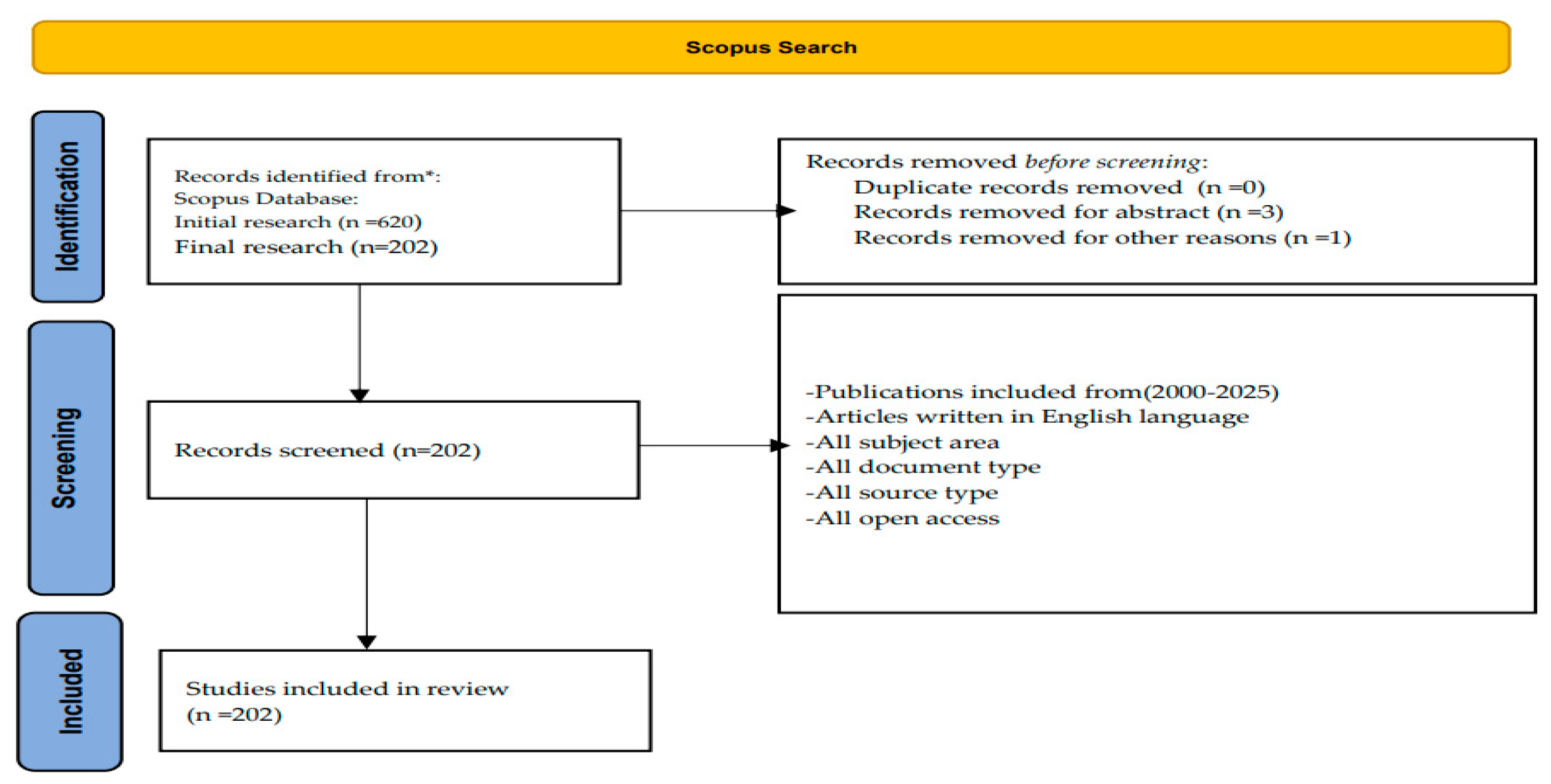
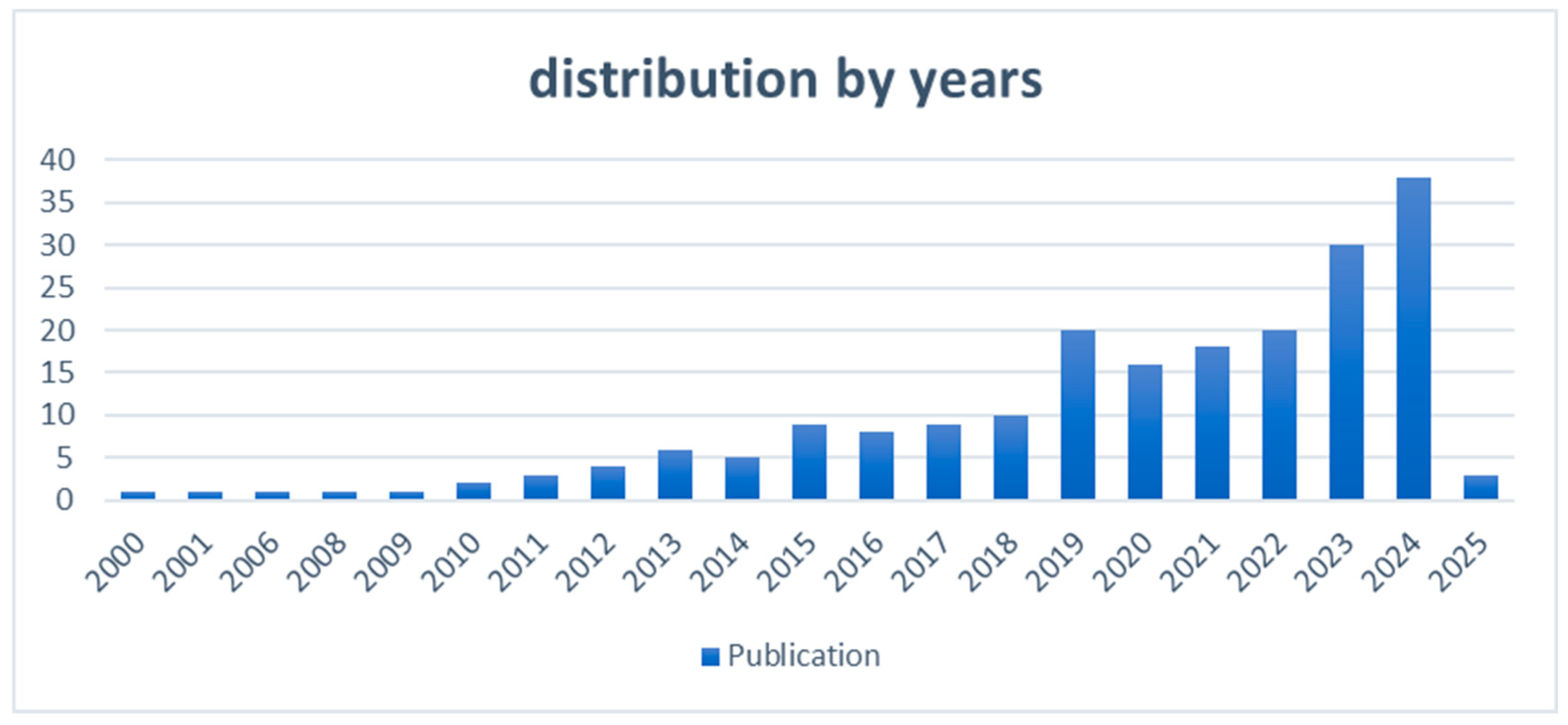
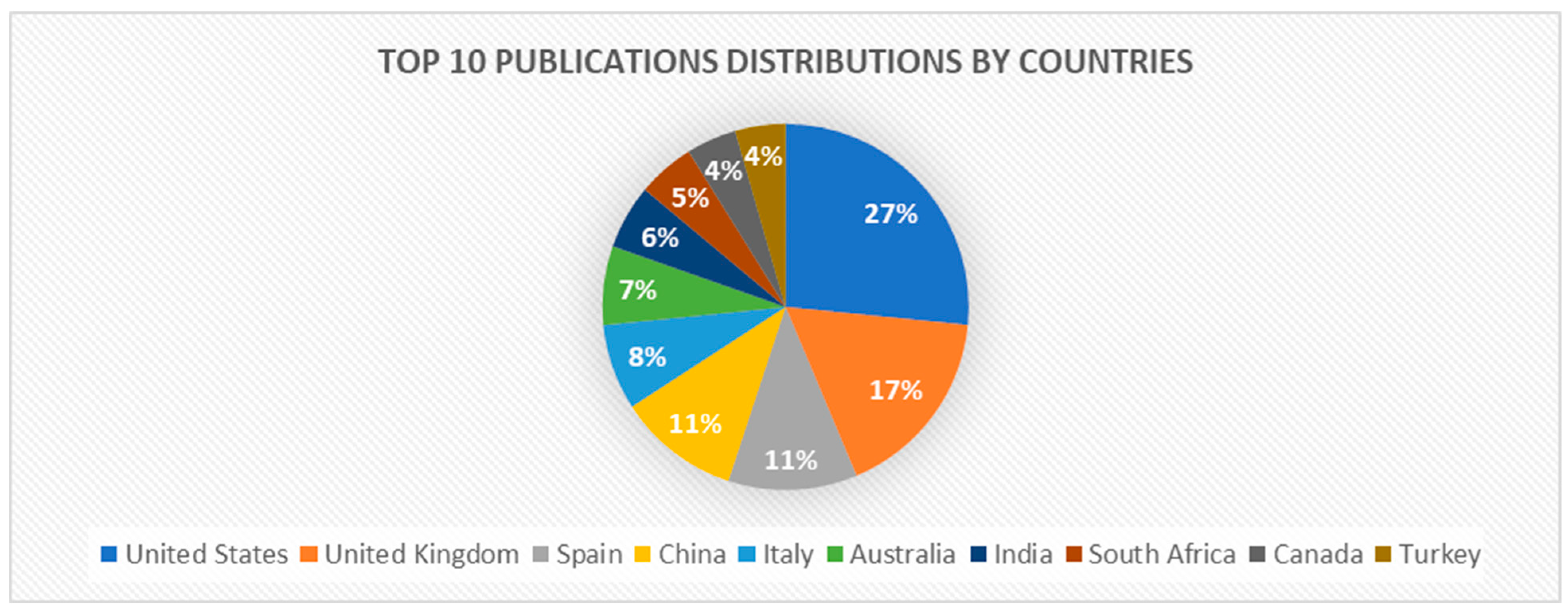
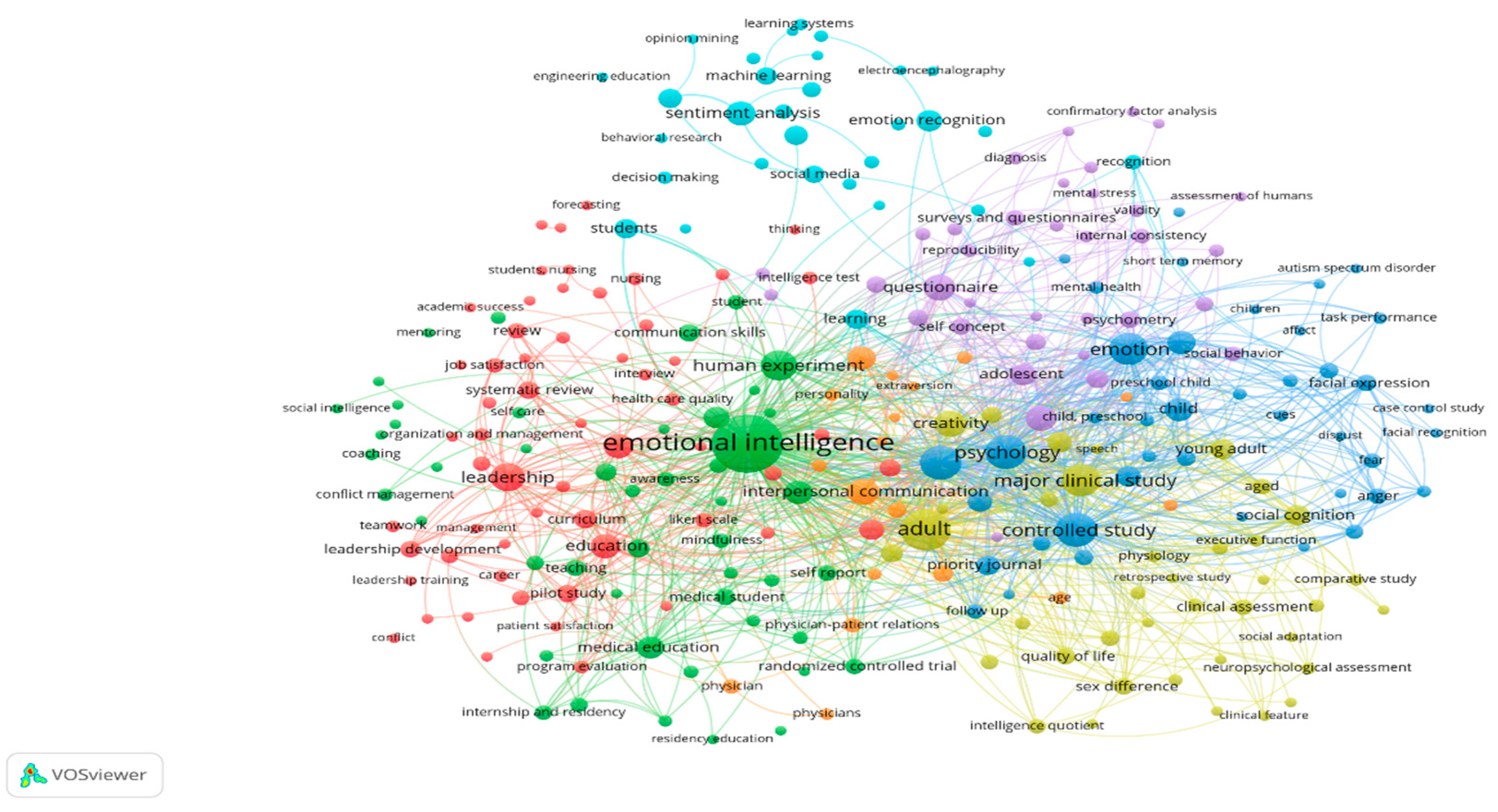
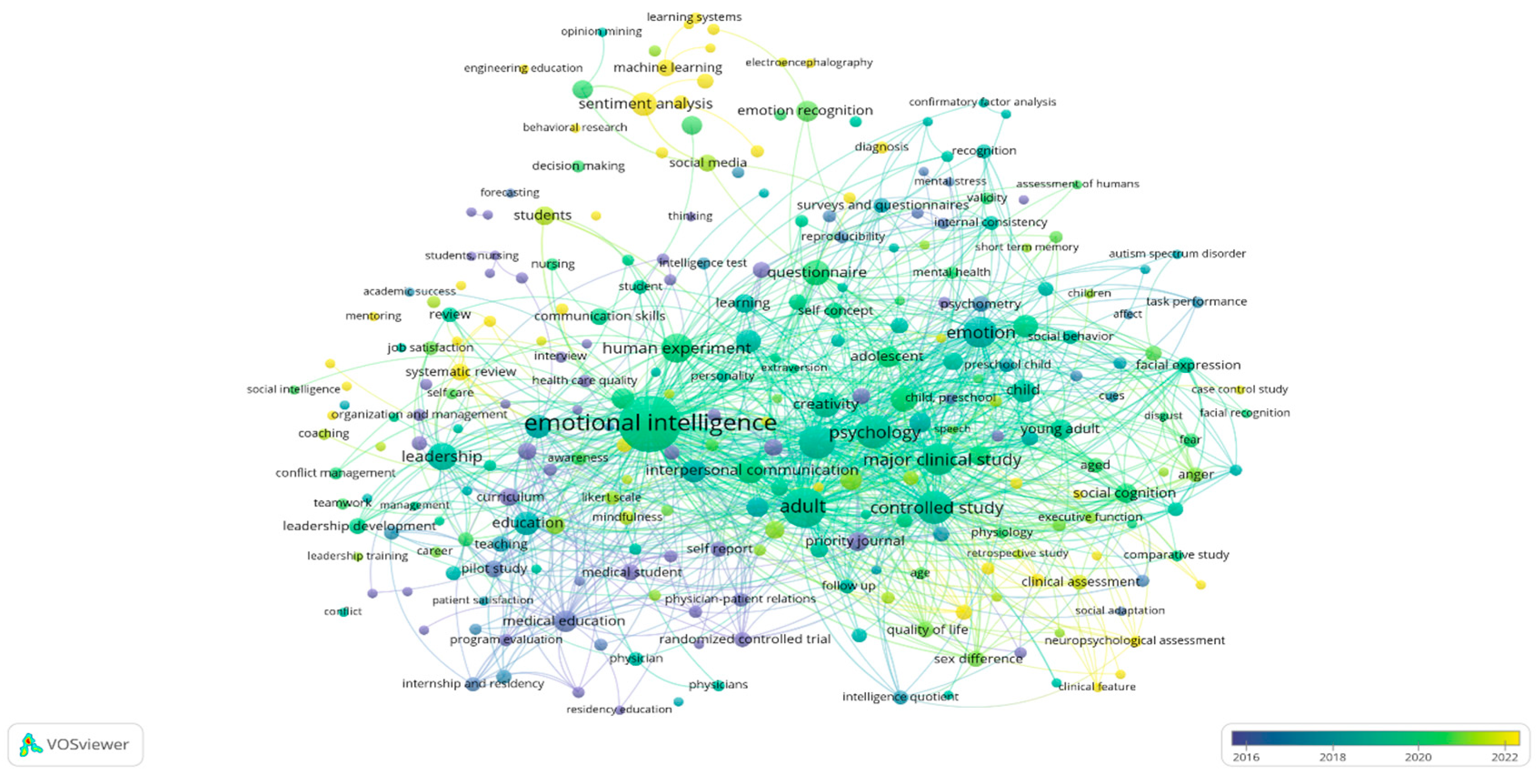
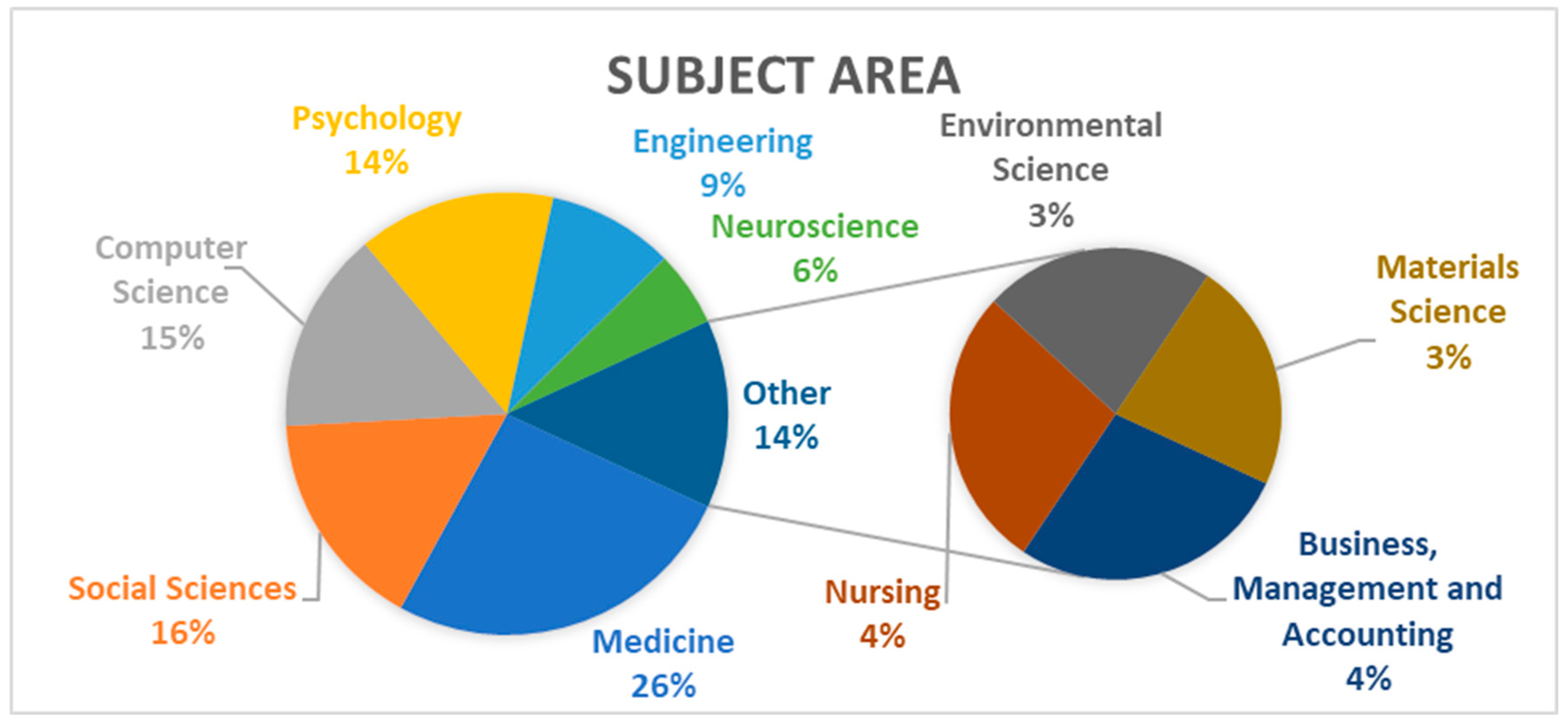
| Inclusion Criteria | Exclusion Criteria |
|---|---|
| -English language | -Any other languages |
| -2000–2025 | -No abstract -Document rejected |
| Journal | TP | TC | Citation Score | Most Cited Journal |
|---|---|---|---|---|
| IEEE Access | 49,687 | 484,743 | 9.8 | A Computation Model for Learning Programming and Emotional Intelligence [13] |
| Plos One | 62,463 | 384,633 | 6.2 | How Do Medical Students Respond to Emotional Cues and Concerns Expressed by Simulated Patients during OSCE Consultations?—A Multilevel Study [14] |
| Sustainability Switzerland | 55,991 | 381,357 | 6.8 | Are emotionally intelligent people more creative? A meta-analysis of the emotional intelligence-creativity link [15] |
| BMC Medical Education | 2958 | 14,457 | 4.9 | Implementing a pilot leadership course for internal medicine residents: Design considerations, participant impressions, and lessons learned [16] |
| Education Sciences | 3334 | 15,882 | 4.8 | Fostering the development of professionalism in veterinary students: Challenges and implications for veterinary professionalism curricula [17] |
| Frontiers in Psychiatry | 9186 | 56,994 | 6.2 | Trait-Based Emotional Intelligence, Body Image Dissatisfaction, and HRQoL in Children [18] |
| International Journal of Environmental Research And Public Health | 46,693 | 339,831 | 7.3 | Emotional intelligence, bullying, and cyberbullying in adolescents [19] |
| Journal Of Nursing Management | 1009 | 9478 | 9.4 | Emotional intelligence: A vital prerequisite for recruitment in nursing [20] |
| Mathematics | 15,129 | 60,616 | 4.0 | Analysis of user needs on downloading behavior of English vocabulary APPs based on data mining for online comments [21] |
| Authors | TP | h-Index | TC | Current Affiliation | Times Cited |
|---|---|---|---|---|---|
| Linares, J.J.G. | 89 | 21 | 1637 | Universidad Autónoma de Chile | 73 |
| Pérez-Fuentes, M.d.C. | 140 | 27 | 2352 | Universidad de Almería | 73 |
| Bahreini, K. | 24 | 8 | 375 | Open Universiteit | 19 |
| Hone, K. | 54 | 25 | 3544 | Brunel University London | 6 |
| Humphris, G. | 303 | 61 | 14,396 | School of Medicine, University of St Andrews | 15 |
| Jurado, M.D.M.M. | 115 | 23 | 1793 | Universidad de Almería | 21 |
| Jurado, M.d.M.M. | 115 | 23 | 1793 | Universidad de Almería | 73 |
| Martín, A.B.B. | 40 | 13 | 533 | Universidad de Almería | 21 |
| Martínez, Á.M. | 50 | 15 | 795 | Universidad de Almería | 21 |
| McKown, C. | 38 | 19 | 1754 | Rush University Medical Center | 4 |
| Document Title | Authors | Year |
|---|---|---|
| Individual differences and their measurement: A review of 100 years of research [22] | Sackett, P.R., Lievens, F., Van Iddekinge, C.H., Kuncel, N.R. | 2017 |
| Can Neurotypical Individuals Read Autistic Facial Expressions? Atypical Production of Emotional Facial Expressions in Autism Spectrum Disorders [23] | Brewer, R., Biotti, F., Catmur, C., … Cook, R., Bird, G. | 2016 |
| Emotional intelligence: A vital prerequisite for recruitment in nursing [20] | Cadman, C., Brewer, J. | 2001 |
| Measuring emotional intelligence of medical school applicants [24] | Carrothers, R.M., Gregory Jr., S.W., Gallagher, T.J. | 2000 |
| Architecture of cognitive flexibility revealed by lesion mapping [25] | Barbey, A.K., Colom, R., Grafman, J. | 2013 |
| How to identify leadership potential: Development and testing of a consensus model [26] | Dries, N., Pepermans, R. | 2012 |
| A pilot study assessing emotional intelligence training and communication skills with 3rd year medical students [27] | Fletcher, I., Leadbetter, P., Curran, A., O’Sullivan, H. | 2009 |
| Emotional intelligence as a crucial component to medical education [28] | Johnson, D.R. | 2015 |
| Self-efficacy and emotional intelligence as predictors of perceived stress in nursing professionals [29] | Jurado, M.M.M., Pérez-Fuentes, M.C., Ruiz, N.F.O., Márquez, M.M.S., Linares, J.J.G. | 2019 |
| Academic success in adolescence: Relationships among verbal IQ, social support and emotional intelligence [30] | Hogan, M.J., Parker, J.D.A., Wiener, J., … Wood, L.M., Oke, A. | 2010 |
| Educational Institutions | TP | Countries |
|---|---|---|
| Universidad de Almería | 6 | Spain |
| Universidad Autónoma de Chile | 5 | Chile |
| Duke University School of Medicine | 4 | United States |
| University of Johannesburg | 3 | South Africa |
| Cluster | Color | Items | Label |
| Cluster1 | Red | Education, medical, graduate, educational model, intelligent test, interview, job performance, job satisfaction, leadership, problem solving, program development, program evaluation, psychological aspect, skill, self evaluation, teamwork | Influence of Education on the Labor Market and the Use of Intelligent Systems for Competence and Performance Evaluation. |
| Cluster2 | Green | Academic achievement, academic performance, coaching, communication skills, competency, development, emotional intelligence, human experiment, professional competence, social intelligence, soft skills, student | Relationship between emotional intelligence, academic achievement, and the development of soft skills. |
| Cluster3 | Blue | Communication skill, comprehension, emotion, facial expression, facial recognition, human relation, language development, nonverbal communication, psychology, social competence, social skills, social status, task performance, verbal behavior | Nonverbal communication and human relation development through facial recognition and psychological analysis. |
| Cluster4 | Yellow | Cognition, creativity study, intelligence, quality of life, sex difference, sex factors, social adaptation, social cognition, social interaction, social psychology | Social factors, cognition, and quality of life: The role of sex differences and social adaptation. |
| Cluster5 | Purple | Emotion regulation, emotionality, factor analysis, psychologic test, social behavior | Emotion regulation through factor analysis, psychological tests, social behavior, and emotionality. |
| Cluster6 | Light Blue | Artificial intelligence, behavioral research, big data, chatgpt, data mining, decision making, deep learning, emotion recognition, image processing, information processing, language, learning, learning systems, machine learning, natural language processing, opinion mining, prediction, quantitative study, recognition, sentiment analysis, social media, speech recognition, support vector machine, videorecording | Artificial intelligence and natural language processing for emotion recognition, sentiment analysis, and speech recognition. |
| Cluster7 | Orange | Big five inventory, communication, correlation analysis, education program, extraversion, gender, interpersonal communication, personality, stress management | Personality traits and their impact on stress management, interpersonal communication, and education using the Big Five Inventory. |
Disclaimer/Publisher’s Note: The statements, opinions and data contained in all publications are solely those of the individual author(s) and contributor(s) and not of MDPI and/or the editor(s). MDPI and/or the editor(s) disclaim responsibility for any injury to people or property resulting from any ideas, methods, instructions or products referred to in the content. |
© 2025 by the authors. Licensee MDPI, Basel, Switzerland. This article is an open access article distributed under the terms and conditions of the Creative Commons Attribution (CC BY) license (https://creativecommons.org/licenses/by/4.0/).
Share and Cite
Farajy, N.; Remaida, A.; Abdellaoui, B.; Moumen, A. Emotion Recognition and Soft Skills Prediction: A Bibliometric Exploration. Eng. Proc. 2025, 112, 8. https://doi.org/10.3390/engproc2025112008
Farajy N, Remaida A, Abdellaoui B, Moumen A. Emotion Recognition and Soft Skills Prediction: A Bibliometric Exploration. Engineering Proceedings. 2025; 112(1):8. https://doi.org/10.3390/engproc2025112008
Chicago/Turabian StyleFarajy, Nouhaila, Ahmed Remaida, Benyoussef Abdellaoui, and Aniss Moumen. 2025. "Emotion Recognition and Soft Skills Prediction: A Bibliometric Exploration" Engineering Proceedings 112, no. 1: 8. https://doi.org/10.3390/engproc2025112008
APA StyleFarajy, N., Remaida, A., Abdellaoui, B., & Moumen, A. (2025). Emotion Recognition and Soft Skills Prediction: A Bibliometric Exploration. Engineering Proceedings, 112(1), 8. https://doi.org/10.3390/engproc2025112008






